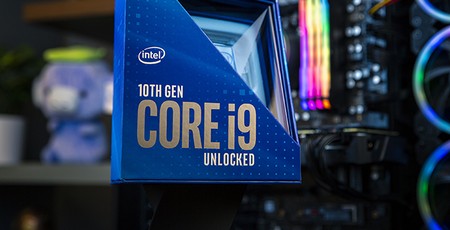
Intel has finally officially launched its 10th generation Comet Lake desktop processors, and obviously they're worth paying attention to.
Based on the 14nm++ silicon fabrication process and built in the new LGA1200 package, the core design of Comet Lake processors and its IPC are identical to predecessor, Skylake, but obviously, there have been some key upgrades and enhancements made. Notably, the clock-speed boosting algorithm has been improved and there are increased core and thread counts for all the CPUs announced. New features are also included for the sake of optimisation.
So, what does all that mean? In all, there are an impressive 32 new processors being released with the fastest coming in with clock speeds of up to 5.3GHz albeit specific to a single core. Predictably, Intel has declared that its 10-core/20-thread Core i9-10900K processor will be the world's fastest gaming processor which we have no doubt benchmarkers will be keen to break down in the future.
All the Core i9 processors in the series will be 10-core/20-thread devices with the Core i9-10900K being unlocked and featuring an iGPU while there's also the i9-10900KF which is also unlocked but has no integrated graphics. On a related note, there's also the i9-10900 which has integrated graphics but isn't unlocked, and the i9-10900F which is multiplier-locked and has no integrated graphics.
Elsewhere, the 10th generation Core i7 series consists of 8 cores and 16 threads with 16MB of shared L3 cache putting it on a par with the 9th generation Core i9 series. The frontrunner here is the Core i7-10700K clocking in at 5.1GHz. Elsewhere comes the i7-10700K, the i7-10700KF, i7-10700, and i7-10700F.
The 10th generation Core i5 series also sees a significant boost being 6 cores and 12 threads with 12MB of shared L3 cache, meaning it's now the same amount as the 8th generation Core i7 series. This one's forerunner is the Core i5-10600K with also the i5-10600KF, and i5-10600, i5-10500, i5-10400, and the i5-10400F following behind.
Then there's the 10th generation Core i3 series which will all be 4 cores and 8 threads with the majority providing 8MB of shared L3 cache to bring it in line with the 7th generation Core i7 series.
Finally, there's the Pentium Gold socket LGA1200 G6000-series 2-core/4-thread processors with 4 MB of L3 cache, and Celeron G5900 series 2-core/2-thread parts with 3 MB L3 cache. Phew.
These slides from Intel's presentation provides us with more details on the many chips soon to be available.
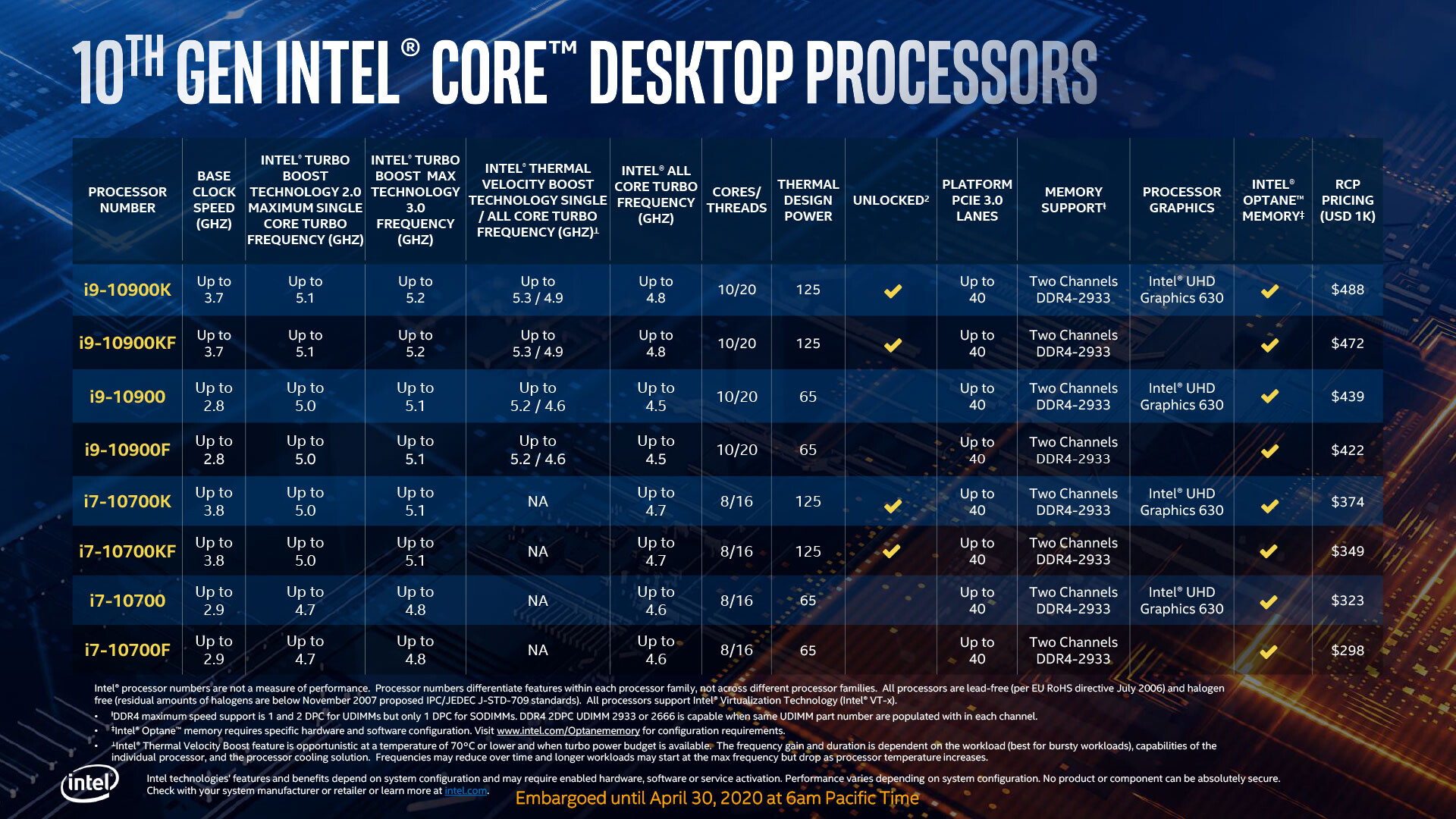
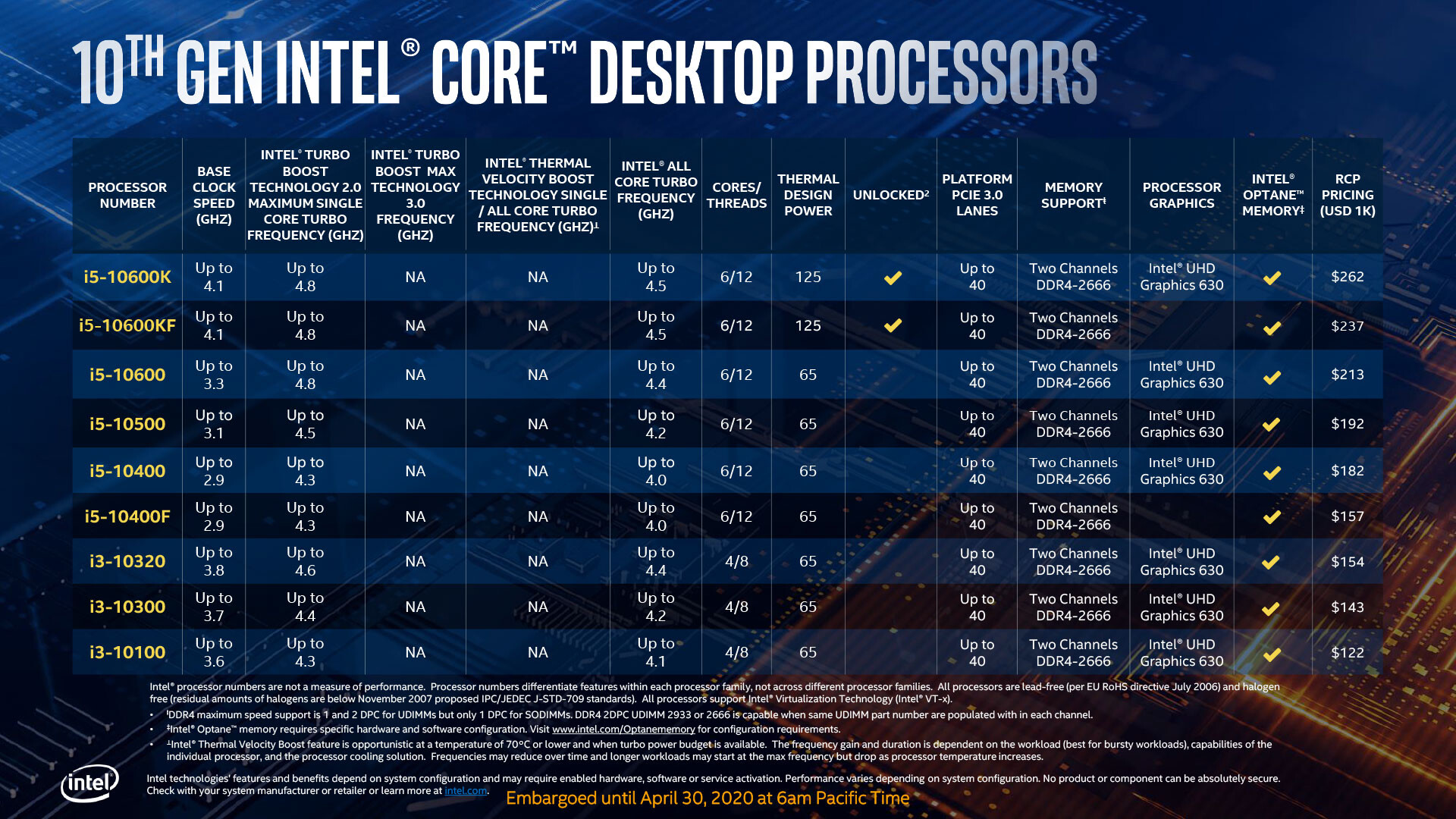
Due to such hefty upgrades, none of the processors will work on older LGA1151 motherboards so expect to budget for a new socket LGA1200 motherboard. Although, you can use any LGA115x-compatible cooler, providing it meets the thermal requirements expected by the processor.
In all cases, the 10th generation series provides HyperThreading across the board, along with up to three different clock speed boosting algorithms. These include Turbo Boost 2.0, Turbo Boost MAX 3.0 and Thermal Velocity Boost, all in a bid to make the power of these chips smarter as well as simply more effective.
Overclockers will be able to enable or disable HyperThreading for individual cores as well as utilise enhanced voltage/frequency curve controls. There's also native support for DDR4-2933 and higher memory clocks across the board.
Expect to be able to get your hands on these processors around May or June time, depending on world issues, no doubt.

MSI MPG Velox 100R Chassis Review
October 14 2021 | 15:04

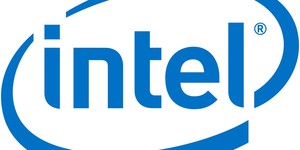
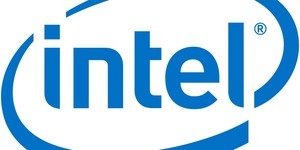
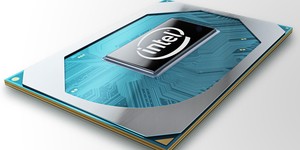




Want to comment? Please log in.